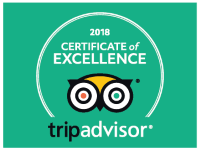Panama Canal | Full or Partial Transit?
Should you do the Panama Canal transit tour while you are in Panama? The answer is most definitely yes, but do you take the full or partial transit route?
Sailing through this impressive, world-famous feat of engineering can be programmed into a day spent in the capital of Panama but only if that day happens to fall on a weekend (obviously we can plan it that way if this experience is on your bucket list). The partial transit is far more popular and is often run while the full transit has quite limited dates due to lower demand.
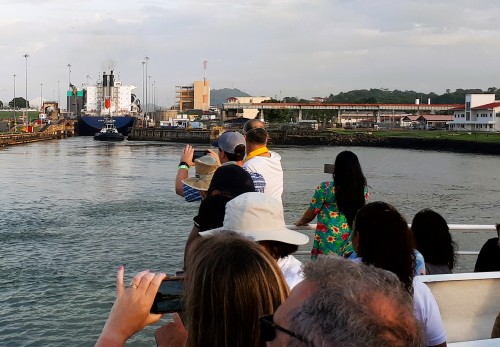
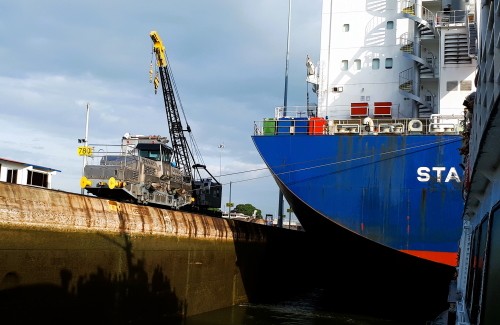
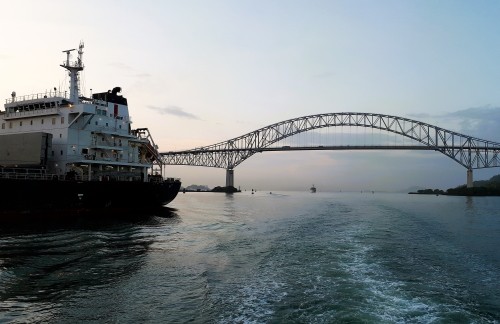

The full transit tour takes you from the Pacific to the Atlantic, or vice versa, during a full day aboard which, adding the transfers to and from the ports, means 10 – 12 hours are spent on the excursion. The bragging rights that go with the full transit are clear, traveling the 80km along the canal and crossing the continental divide between the two oceans is a notable travelogue to have under your belt. But is it really that much better as an experience?
The partial transit takes around 6 hours when you factor in the transfers, checking-in, boarding and disembarking. For this description let’s assume you take the Northbound route, from Panama City to Gamboa. The first thing to note, whether you choose the partial or full transit is that you don’t know exactly what time the tour starts until the day before, for reasons we explain below. You will be given a range of time, let’s say 6 am to 7 am, for when check-in could be required but that could change to be earlier or later depending on canal traffic.
The tourist ships take advantage of the space a cargo ship leaves in the lock in order to rise and fall at the same time. Using the lock for a relatively small tourist ship, displacing some 5000 tonnes or so, would not be possible due to the immense cost of each filling or emptying of tens of thousands of gallons of water. Tickets for such a service would cost thousands of dollars per person, instead of around 130.
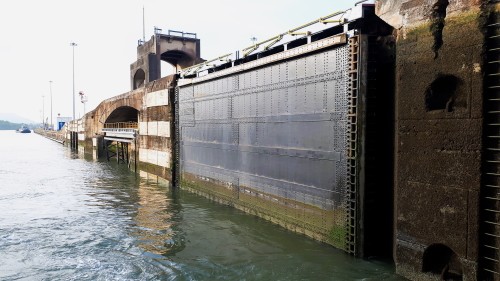
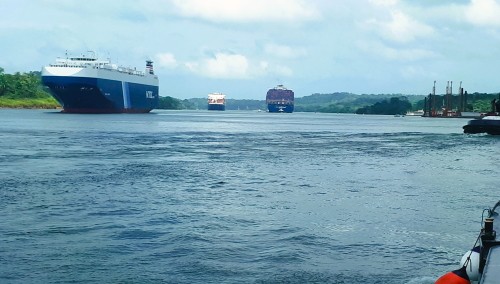
The super large vessels, which can weigh over 150,000 tonnes, don’t leave much room in the lock, so the tourist ships have to find space behind the 60 to 70,000-ton cargo ships that leave perhaps 250 metres of space. This means they have to vary the times when they can enter the locks but this also means that you always get up-close-and-personal with these gigantic seafarers.
After you leave the port at the end of the causeway near Panama City you navigate toward the canal entrance, passing many ships moored up and waiting for their time slot to enter. There are some superb views of the city skyline and then under the impressive Puente de las Americas bridge. Then comes the Miraflores lock complex which is the lock that non-cruise tourists always visit, where there is an observation platform for the general public. These visitors are now watching you along with the huge ship you are shadowing!
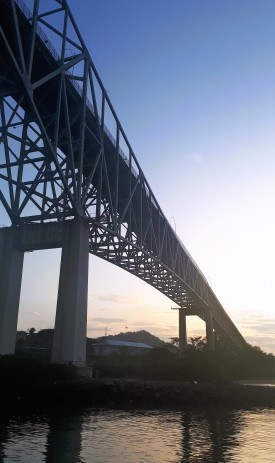
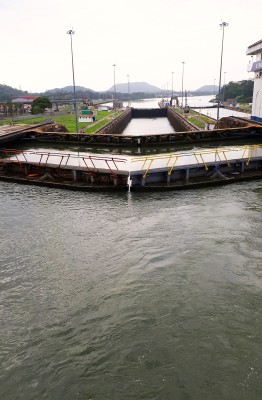
It takes a long time to get the cargo ship into its position ahead of you, you see how the powerful tug boats manoeuvre the ships into place and escort them the whole way. In each lock, the ships are hooked up to little locomotives with cables and these guide the ship forward. You will see the huge gates closing and opening and see how fast the locks fill or empty as enormous volumes of water are pumped around. The whole process is fascinating.
On the partial transit, you will pass through two lock systems (Miraflores and Pedro Miguel) and navigate the lake in between, plus you will sail through the Gaillard Cut crossing the continental divide. There are ships coming southbound all the time so you will pass other vessels as you can see in our photos, some of them are absolutely massive and they must be tricky to navigate in a relatively narrow channel.
The tourist boats are well equipped and comfortable enough for the day out, with a simple breakfast and a box lunch provided for the partial transit. For the full transit, there are extra snacks in the afternoon. The partial transit ends at the port town of Gamboa which is about halfway between the two oceans, and upon arrival, you board buses for the 45-minute drive back to the port where you started. From there you get shuttled back to your hotels.
So is the partial Transit better?
In our opinion, yes! If you are not obsessed with having the bragging rights from the full transit, ocean to ocean, then the partial transit is more than enough and a great experience. You go through two lock complexes, navigate the lake and the channel, see lots of huge cargo ships and witness how the Panama Canal works close up. Plus it is cheaper and excursions run on many more dates, it’s definitely the way to go.

